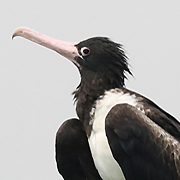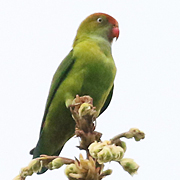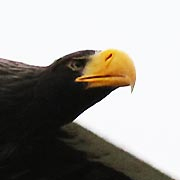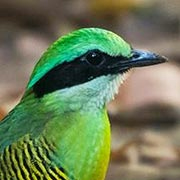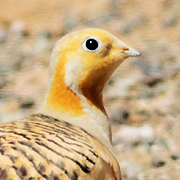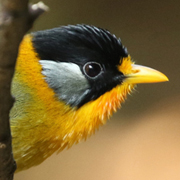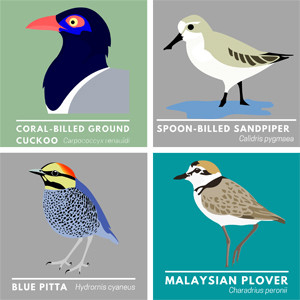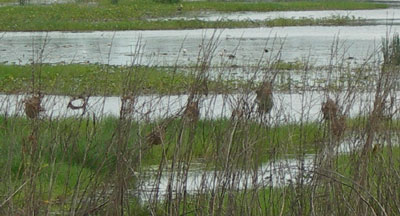
Bangkok is surrounded by wetlands, indeed it is built upon them, and unfortunately the city is rapidly spreading out further, obliterating many wetland areas that were inhabited by wetland birds. The result is that many species that were formerly abundant are becoming ever scarcer. However, the fishponds close to Muang Boran in Samut Prakarn province remain a good place to see many of these species in good numbers: Muang Boran Fishponds.
On Saturday 24th May I took a taxi to this site, arriving at about 6am in the morning. Arriving this early was a good plan as this turned out to be a particularly hot and humid day and by 10 am I was suffering from the heat. Birds are always abundant at this site and in the first few minutes I saw Chestnut Munia, Plain Prinia, Cattle Egret, Great Egret, Little Egret, Javan Pond Heron, Little Grebe, Little Cormorant and Striated Grassbird.
Just a little further along the track I stopped to look over some pools which are usually pretty productive and sure enough there were a number of Bronze-winged Jacanas, Pheasant-tailed Jacanas and White-browed Crakes creeping around in the floating vegetation. All three of these species are common at Muang Boran Fishponds and Pheasant-tailed Jacana and White-browed Crake are more abundant here than anywhere else I know in Thailand. On this trip I saw at least 80 Pheasant-tailed Jacanas and over 20 White-browed Crakes – the highest count of the jacana I have made here was of 192 birds on 22 February 2004.
Striated Grassbird is always obvious here and to come to this site and miss it would mean you would have lost the use of both your eyes and ears as it constantly performs its song flight all around. At this time of year many pairs are making nests and making a rather shrill chip, chip call in addition to their song flight. This visit probably resulted in about 20 birds – I am not really sure as I wasn’t counting, but they were everywhere.
Quite close to where I usually enter this site is a large pond which has remained drained and dry for some months and here I found a flock of 148 Cattle Egrets in the company of numerous Javan Pond Herons and a few Red-wattled Lapwings. This area is also being heavily used by Oriental Pratincoles which now have numerous young. Interestingly, the adults, although still breeding, are in quite an advanced state of moult and in flight their profile looks quite different than it did just a month ago – now they have much stubbier wings as their flight feathers are regrowing. Another species I saw here (well, heard more than saw) was Zitting Cisticola which also likes the grass and bare patches created when these pools are drained and a pair of Long-tailed Shrikes were in the company of a juvenile.
After dodging some noisy dogs I watched the waterbirds on another large pool, this time one that has been flooded for some time. It was full of both jacana species, crakes, pond herons and other waterbirds. Here I also saw a couple of Black Bitterns and a Black-crowned Night Heron flying overhead. A male Koel flew out of a tree here chased by a couple of Streak-eared Bulbuls, presumably it was seen as a threat. A number of other common birds were also to be found in this area including Oriental Magpie Robin, the ubiquitous Asian Pied Starling, Common Myna and White-vented Myna, Red Collared Dove and Peaceful Dove. One rather less common bird was a Purple Heron; this site holds up to 11 Purple Herons in the winter but most of these are winter visitors, however, I always see this species in ones and twos throughout the summer and possibly they breed somewhere nearby.
Moving along I walked towards the location of an Asian Golden Weaver colony, another scarce bird but ever present here. A few nests were in use (see photo below) and I saw around 16 individuals, but with birds in the nest there were undoubtedly more around.

This pond is another which is excellent for waterbirds and both Jacanas are always numerous here and on this visit I also saw Indian Cormorant, Little Cormorant, Black Bittern, Cinnamon Bittern, Yellow Bittern, White-browed Crake, Common Moorhen and Watercock here.
Whilst many species of birds can be found here, one rather upsetting problem is the abundance of suspended hooks sued to deter birds from eating all the fish. rRather than deter the birds they simply get caught on the hooks and die. On this visit I found a number of corpses but shockingly I came across a Little Grebe and Greater Painted Snipe caught by hooks and still alive. I have written a short article about this with photos, including one rather bloody one of the Painted Snipe on thaibirding.com: Birds Dead & Dying at Muang Boran Fishponds.
With this and the heat I decided it was time to go. On the way out I added I number of species to the day list, including Brahminy Kite, a pair of Black-shouldered Kites, 2 Indian Rollers and Yellow-bellied Prinia. Also of note were a couple of birds that are usually considered winter visitors: 1 Intermediate Egret, 1 Oriental Reed Warbler, 9 Barn Swallows. In reality all of these species are known to be present in small numbers throughout the summer but it is always interesting to see birds such as these outside of their usual time in Thailand.
I saw 59 species of bird on this visit to Muang Boran Fishponds which is a high total for birdwatching in Thailand at this time of year, however, in mid winter over 70-80 species is normal.
birds, birding, nature, thailand


 May 26th, 2008
May 26th, 2008  Nick
Nick  Posted in
Posted in 
